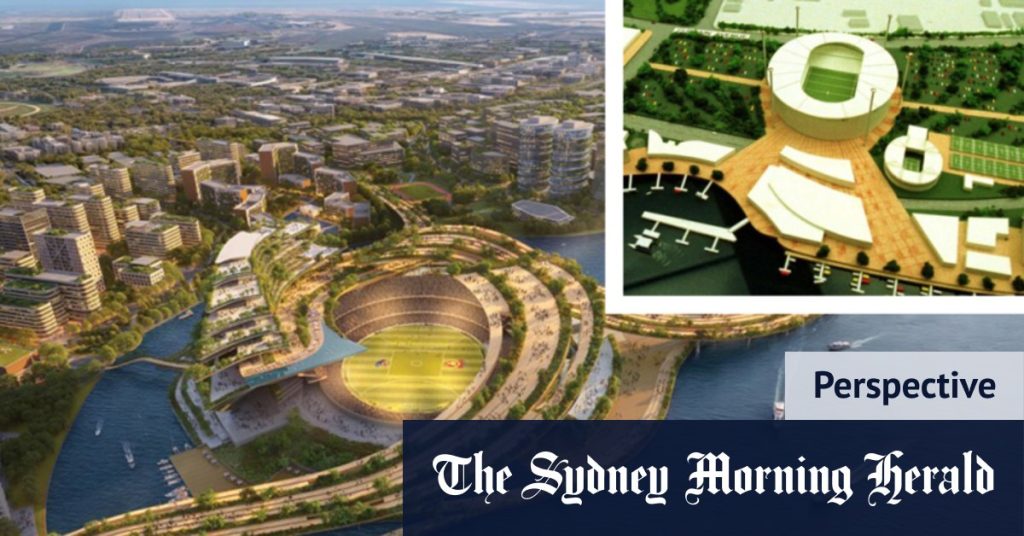The Brisbane Design Alliance recently proposed a $6 billion development at Hamilton, which included a 60,000-seat Olympic stadium at its center. This idea was inspired by a 26-year-old proposal made by then-premier Rob Borbidge in 1998 for a new stadium in the same location. The Rivercity consortium had also pitched a similar concept back then, including a 65,000-seat stadium, an international tennis center, hotels, a marina, residential options, and public walkways. The cost of the 1998 proposal was estimated to be $900 million, which was considered modest at the time. However, the election of the Beattie Labor government put an end to the project, leading to the successful renovation of Suncorp Stadium instead.
The Hamilton stadium proposal is a more ambitious and expensive version of the 1998 concept. In today’s terms, the 1998 proposal would have cost around $1.8 billion, significantly less than the BDA’s $6 billion vision. The new development plan is described as “Rivercity on steroids,” reflecting the boldness and grand scale of the project. The proposed stadium would have an oval shape and is expected to be a major investment in Brisbane’s infrastructure and sports facilities. The evolution of the idea over the years shows how concepts can be reimagined and expanded upon, reflecting changing times and priorities in city planning and development.
The proposed Hamilton development aims to create a world-class sports and entertainment precinct on the north bank of the Brisbane River. The inclusion of a 60,000-seat Olympic stadium reflects a commitment to hosting major sporting events and attracting visitors to the area. The project also envisions additional amenities such as accommodation options, a marina, and public spaces, creating a vibrant and attractive destination for residents and tourists alike. The ambitious scope of the development signifies a shift towards more innovative and impactful urban planning in Brisbane, setting a new standard for future projects in the city.
The comparison between the 1998 proposal and the current Hamilton stadium plan highlights the evolution of ideas in city planning and development. While the previous concept was considered ambitious at the time, the new proposal takes it to the next level in terms of scale, cost, and vision. The BDA’s $6 billion project represents a significant investment in Brisbane’s infrastructure and cultural landscape, signaling a commitment to growth and innovation in the city. The proposed development has the potential to transform the Hamilton area into a dynamic hub for sports, entertainment, and recreation, contributing to the city’s reputation as a world-class destination.
The history of the Hamilton site and the various proposals put forward over the years underscore the importance of long-term planning and vision in urban development. While some ideas may be revisited and reimagined, others may pave the way for new and more ambitious projects in the future. The BDA’s proposal for a $6 billion development at Hamilton reflects a bold and forward-thinking approach to city planning, aiming to create a lasting legacy for Brisbane and its residents. The project’s potential impact on the local economy, tourism, and community life highlights the significance of large-scale developments in shaping the city’s identity and future growth.
In conclusion, the Brisbane Design Alliance’s proposal for a $6 billion development at Hamilton, including a 60,000-seat Olympic stadium, builds upon previous ideas and visions for the site. The ambitious project represents a significant investment in Brisbane’s infrastructure and cultural landscape, setting a new standard for city planning and development in the region. By reimagining and expanding upon past proposals, the Hamilton stadium plan showcases the evolution of ideas in urban development and highlights the importance of long-term vision and innovation in shaping the city’s future. The project has the potential to transform the Hamilton area into a dynamic and vibrant destination, attracting visitors, residents, and major events to the region.


